Are You Making These 5 Common Mistakes In Your
Quest For A
Flat Belly?
Click Here to Find Out
The keto and paleo diets have gained popularity for their potential health benefits and weight loss effects, but they differ significantly in their approach and the foods they permit. The Ketogenic, or ‘keto,’ diet is a high-fat, low-carbohydrate diet that aims to induce ketosis, a metabolic state in which the body burns fat for fuel instead of carbohydrates. On the other hand, the paleo diet, also known as the Paleolithic or “caveman” diet, encourages eating foods that would have been available to our hunter-gatherer ancestors, focusing on whole foods and excluding processed items.

Both diets have their unique set of rules and foods that are encouraged or excluded, which can affect a person’s nutrient intake and lifestyle. The keto diet, by drastically reducing carbohydrate intake, forces the body into ketosis, while the paleo diet places its emphasis on food quality and ancestral eating patterns. Individuals choose between these diets based on various factors, including their health goals, dietary preferences, and how their body responds to certain macronutrient ratios.
Key Takeaways
- Keto operates on inducing a state of ketosis, while paleo focuses on ancestral, whole foods.
- Both diets exclude grains and processed sugars, but have different rules about other foods.
- Personal health goals and food tolerances are key to choosing the right diet for an individual.
Comparison of Keto and Paleo
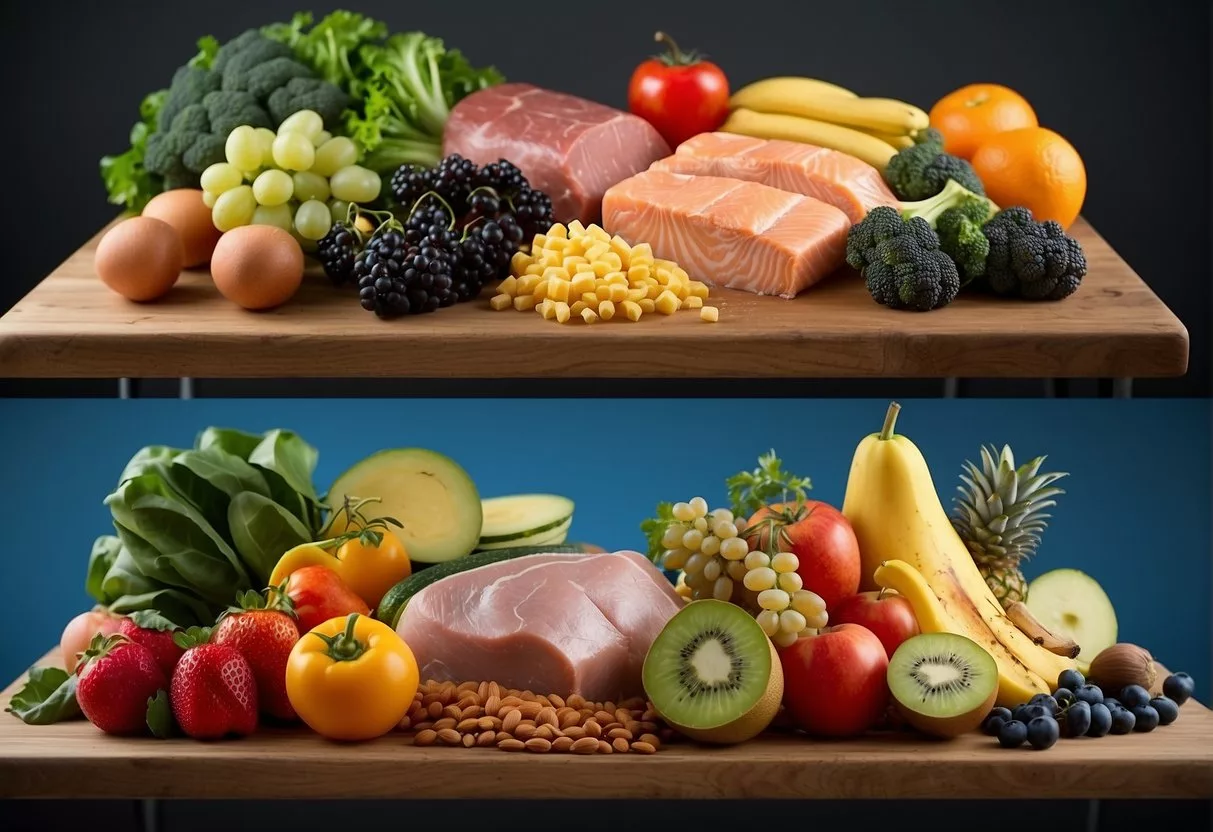
The ketogenic (keto) and paleolithic (paleo) diets are structured around distinct principles that advocate for whole food consumption and restrict certain types of foods. Understanding their differences helps individuals choose the approach best suited to their health goals and lifestyle.
Dietary Restrictions
Keto:
- Carbohydrates: Severely limits carbs to typically 20-50 grams per day to induce ketosis, a metabolic state where the body burns fat for fuel instead of glucose.
- Fats: Emphasizes high fat intake, constituting about 70-80% of total daily calories.
Paleo:
- Processed Foods: Excludes modern processed foods, legumes, grains, and dairy which are considered to not have been available during the Paleolithic era.
- Natural Foods: Encourages consumption of whole foods, such as lean meats, fish, fruits, vegetables, nuts, and seeds.
Weight Loss and Health Benefits
Keto:
- Weight Loss: Can result in quick weight loss due to reduced carbohydrate intake and increased fat burning.
- Health Benefits: Has potential benefits for blood sugar control, and may improve symptoms in certain neurological disorders.
Paleo:
- Weight Loss: Often leads to weight loss due to elimination of processed foods and refined sugars.
- Health Benefits: May improve heart health due to an emphasis on lean proteins and plant-based foods.
Flexibility and Sustainability
Keto:
- Flexibility: Considered less flexible due to strict carb limitations.
- Sustainability: May be challenging to sustain long-term for some individuals due to the restrictive nature and potential nutrient deficiencies.
Paleo:
- Flexibility: Generally more flexible with food choices, as long as they fit within the ‘whole food’ concept.
- Sustainability: Can be more sustainable due to a wider variety of allowed foods and emphasis on food quality rather than macronutrient ratios.
Benefits and Challenges
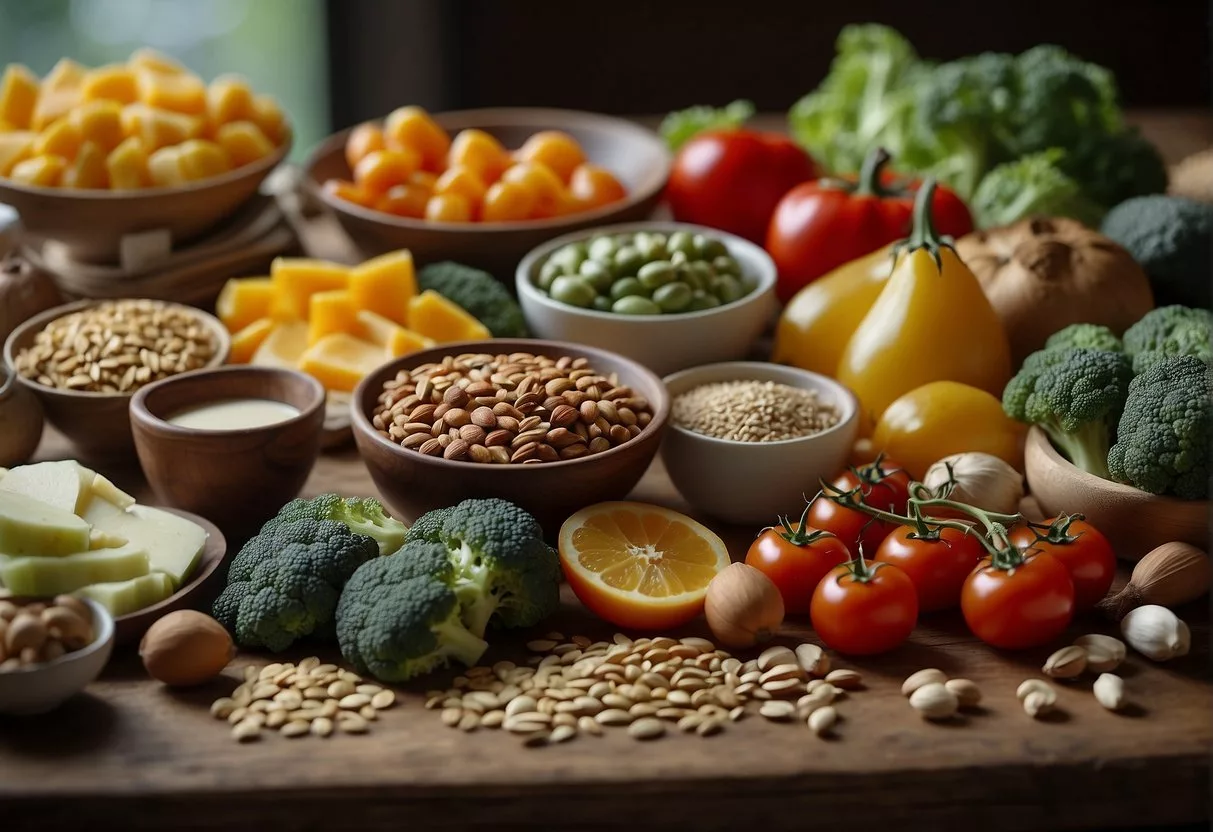
Exploring the keto and paleo diets uncovers both attractive benefits and notable challenges one might encounter. Understanding these can help individuals make informed decisions about which dietary approach might best suit their lifestyle and health goals.
Keto Benefits and Challenges
Benefits:
- Weight Loss: The ketogenic diet is well-known for its potential to promote weight loss by shifting the body into a state of ketosis, where it burns fat for fuel instead of carbohydrates.
- Blood Sugar Control: It may be beneficial for individuals with type 2 diabetes or insulin resistance due to its very low carbohydrate content.
Challenges:
- Adherence: Following a very low-carb diet requires significant changes to eating habits, which can be difficult to maintain long-term.
- Nutrient Intake: There’s a risk of nutrient deficiencies if one does not carefully plan to include a variety of nutrient-rich, keto-compliant foods.
Paleo Benefits and Challenges
Benefits:
- Whole Food Focus: The paleo diet emphasizes eating whole foods and can lead to improved nutrient consumption by eliminating processed items.
- Flexible Carbohydrate Intake: Compared to keto, the paleo diet allows for a higher intake of carbohydrates, including fruit, which can be more sustainable for some people.
Challenges:
- Dietary Restrictions: The diet excludes legumes, grains, and dairy, which can make it challenging for adherents to achieve a balanced diet without careful planning.
- Potential for High Cost: The focus on grass-fed meats, organic produce, and other natural foods often touted in the paleo diet can lead to higher grocery bills.
Choosing Between Keto and Paleo
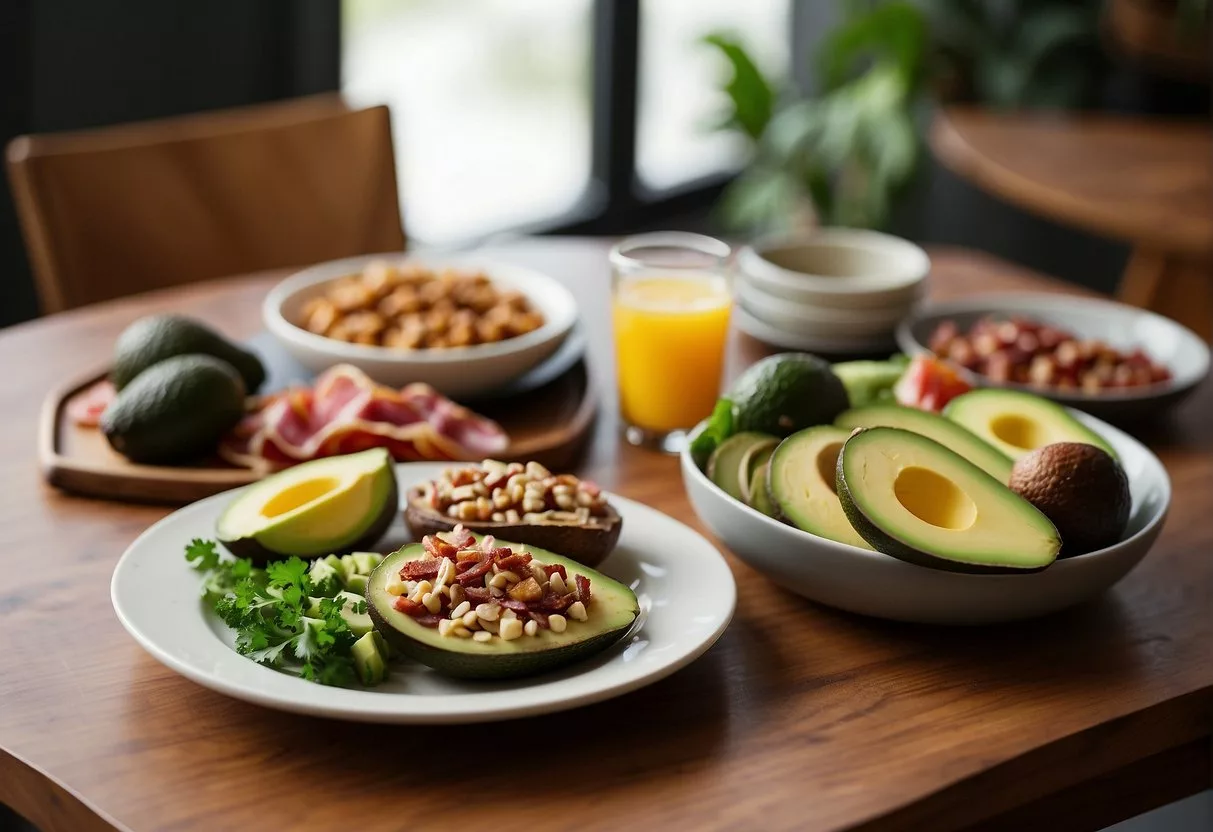
When selecting a diet, individuals should consider their lifestyle, preferences, and health. Both the Keto and Paleo diets have distinct features that cater to different goals and medical needs.
Personal Goals and Preferences
- Keto Diet: This is for those aiming for weight loss or managing conditions like epilepsy. It involves a high-fat, moderate-protein, and low-carbohydrate intake to induce ketosis, a state where the body burns fat for energy.
- Paleo Diet: Suitable for people interested in following what is believed to be a diet of our Paleolithic ancestors, prioritizing whole foods and a higher protein intake. It’s not as restrictive on carbs but eliminates grains, legumes, and dairy.
Medical Conditions and Considerations
- Keto Diet:
- Can be helpful for individuals with metabolic syndrome or type 2 diabetes.
- May not be suitable for individuals with issues related to high fat intake, like certain lipid disorders.
- Paleo Diet:
- May benefit those looking to avoid processed foods and with allergies or intolerances to dairy or gluten.
- Not typically recommended for individuals with kidney diseases due to higher protein levels.
Conclusion
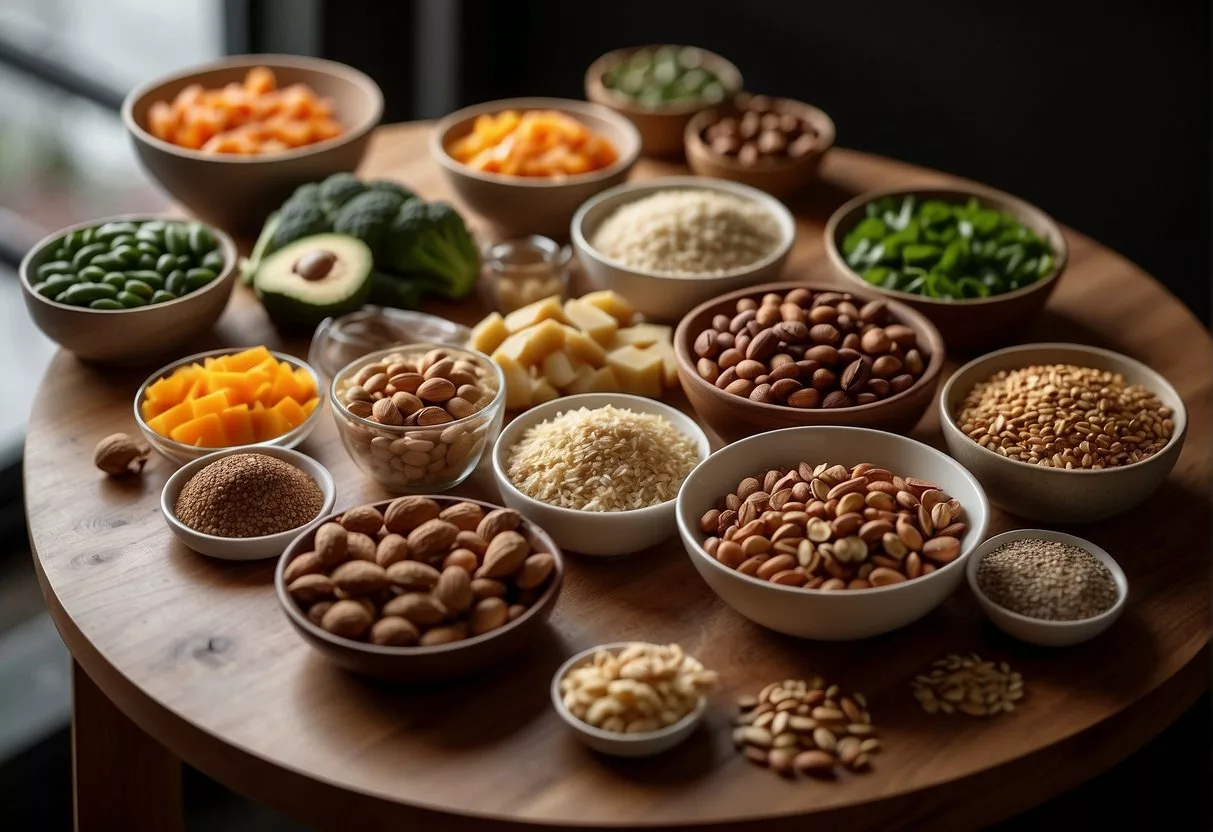
The ketogenic (keto) and paleolithic (paleo) diets are both popular eating plans with distinct philosophies and guidelines. The keto diet is characterized by its high-fat, adequate-protein, and very low-carbohydrate approach, targeting about 70% of total calories from fat. This macronutrient ratio is intended to shift the body into a state of ketosis, where it burns fat for fuel instead of carbohydrates.
On the other hand, the paleo diet focuses on consuming foods that are presumed to have been available to humans during the Paleolithic era. It emphasizes whole, unprocessed foods and permits a higher intake of fruits along with some natural sweeteners. It does not specifically target macronutrient ratios but encourages foods considered “natural” to early humans.
Both diets recommend avoiding grains, legumes, and most processed foods. However, the keto diet excludes high-sugar foods, including most fruits, due to its stringent carb limitations. In contrast, paleo allows a wider variety of fruits and accepts certain natural sweeteners.
When deciding between keto and paleo, individuals should consider their personal health goals, lifestyle, and dietary preferences. Those looking to enter ketosis may opt for the keto diet, while those wishing to follow a diet based on ancestral eating patterns may prefer paleo. As with any nutritional plan, consulting with healthcare providers is advised to tailor the diet to one’s individual needs and to ensure balanced nutrition.
Frequently Asked Questions
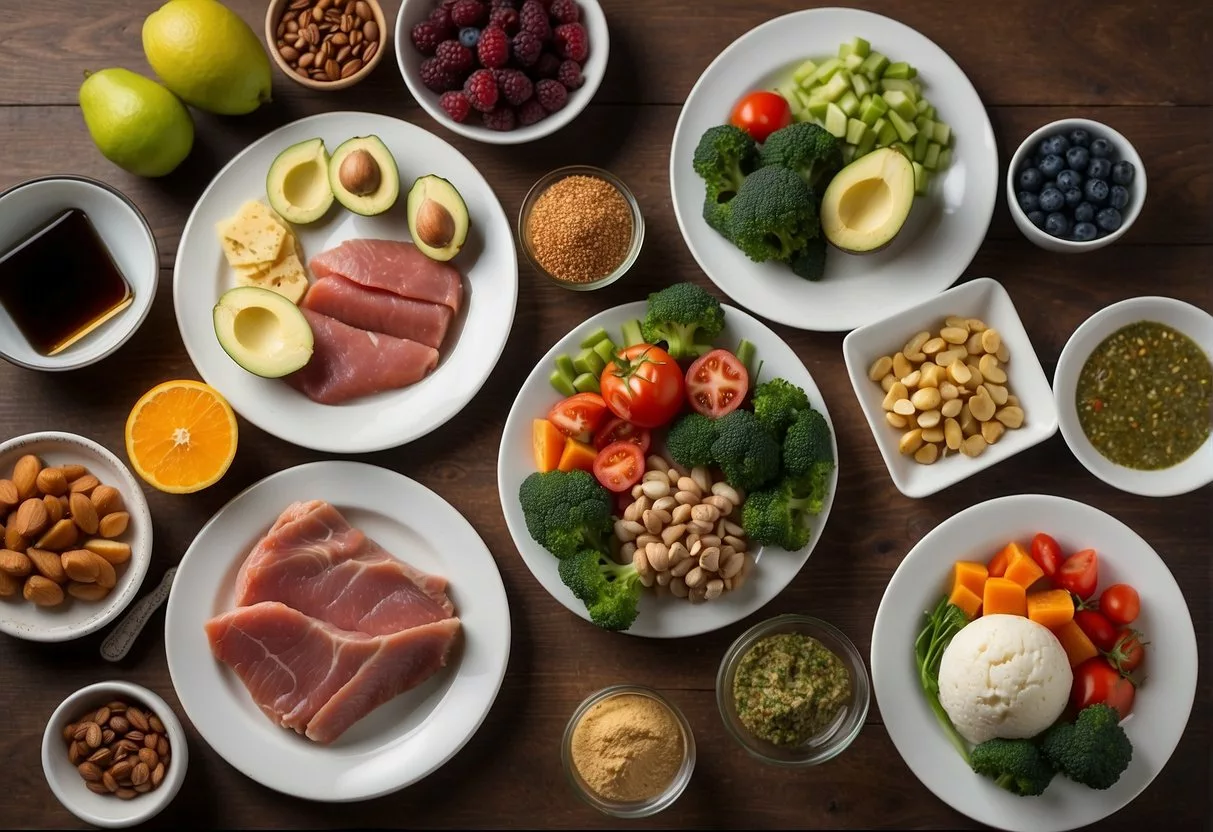
This section answers common questions about the Keto and Paleo diets, focusing on their specific characteristics and impacts on health.
What are the food restrictions unique to the Paleo diet?
The Paleo diet restricts grains, legumes, refined sugars, dairy products, and processed foods. Instead, it promotes the consumption of foods that would have been available to Paleolithic humans, such as lean meats, fish, fruits, vegetables, nuts, and seeds.
Can following a Keto diet lead to weight loss more effectively than Paleo?
Some individuals may find the Keto diet leads to more effective weight loss due to its strict carb restriction, which can prompt the body to burn fat for energy. However, results can vary based on personal metabolism and adherence to the diet.
What are the main differences between Paleo and Keto when it comes to carbohydrate intake?
The Keto diet significantly restricts carbohydrates to typically less than 50 grams per day to induce ketosis, while the Paleo diet does not have a strict limit on carbohydrates but naturally reduces carb intake by eliminating grains and processed sugars.
How does the Paleo diet impact diabetes compared to the Keto diet?
The Paleo diet may help manage diabetes by emphasizing whole foods and a balance of macronutrients, potentially improving blood sugar control. The Keto diet, by significantly reducing carbs, can also be effective for blood sugar regulation, which may benefit individuals with diabetes.
Is it possible to enter a state of ketosis while on a Paleo diet?
It is less common to enter ketosis on a Paleo diet because it typically contains a higher level of carbohydrates than what the Keto diet allows. However, if one significantly reduces their carb intake on a Paleo diet, they might enter
